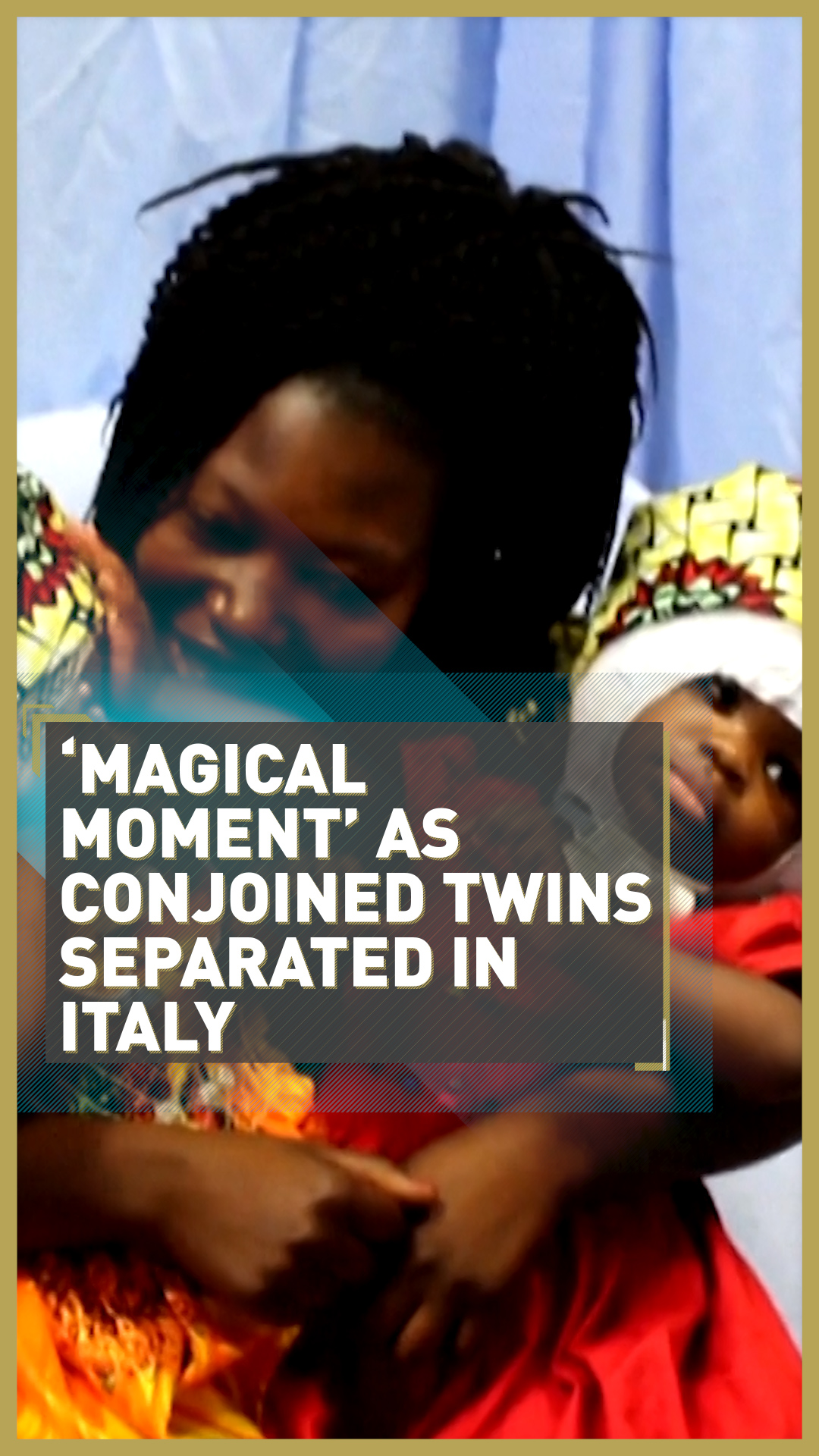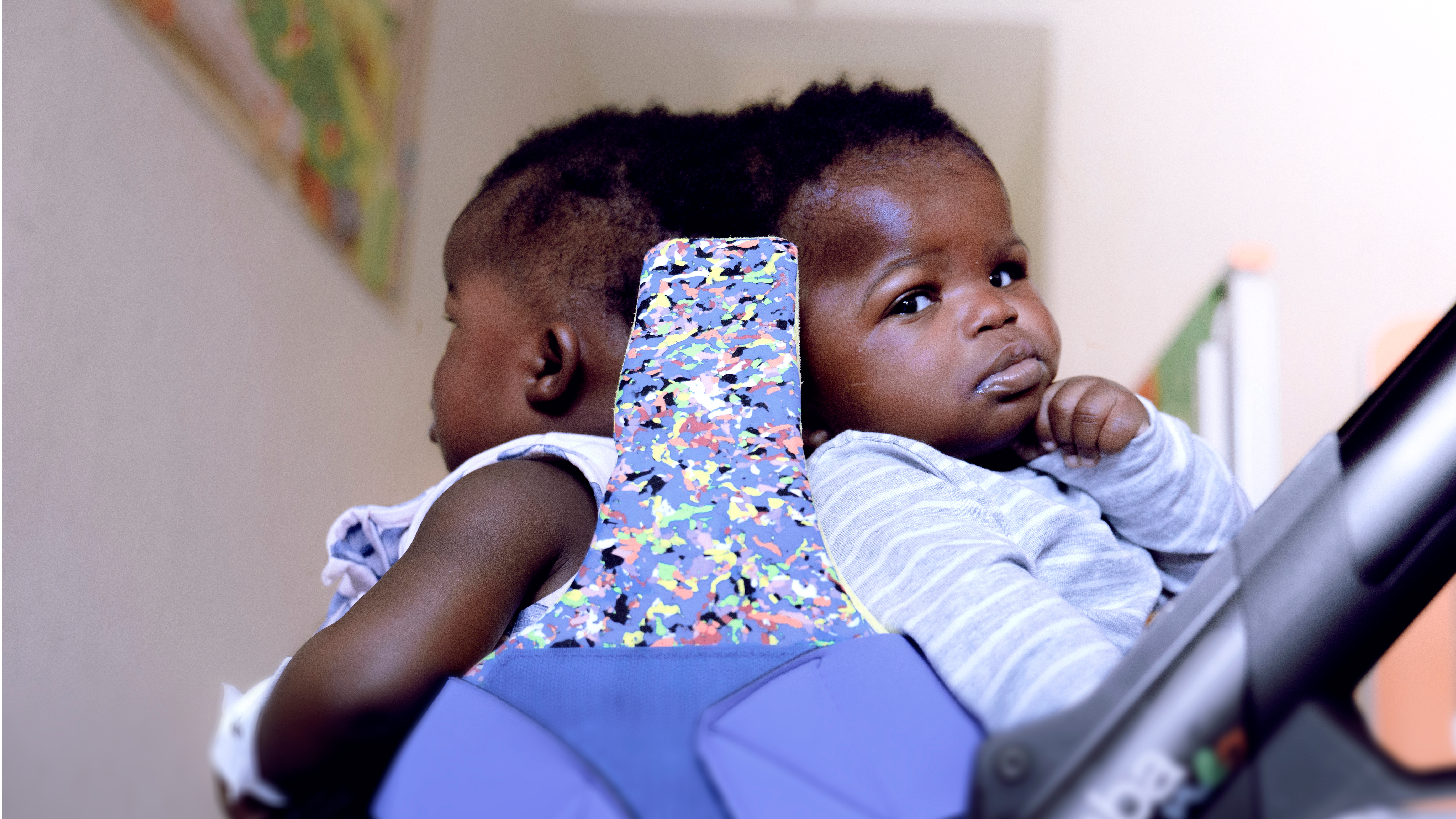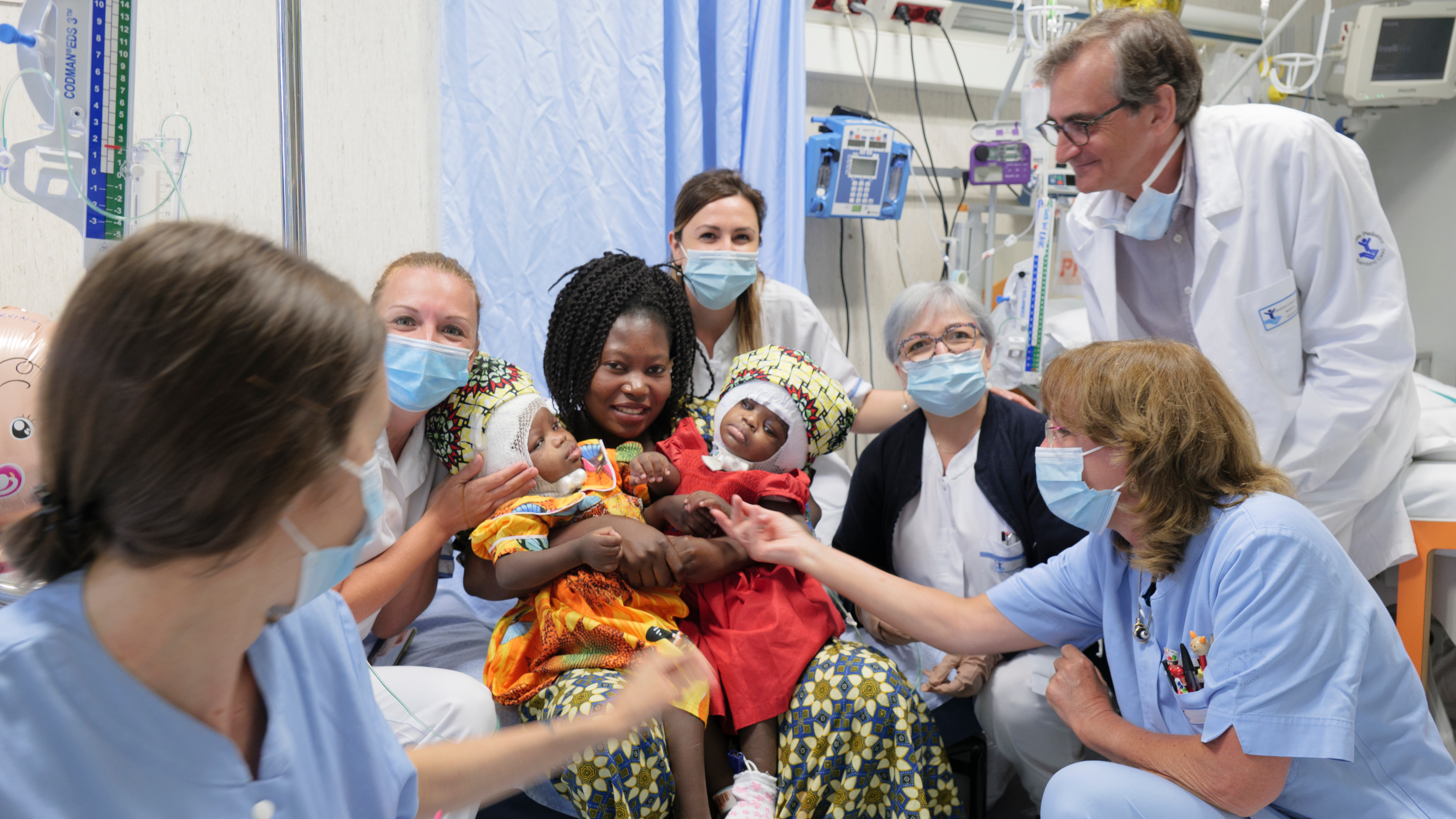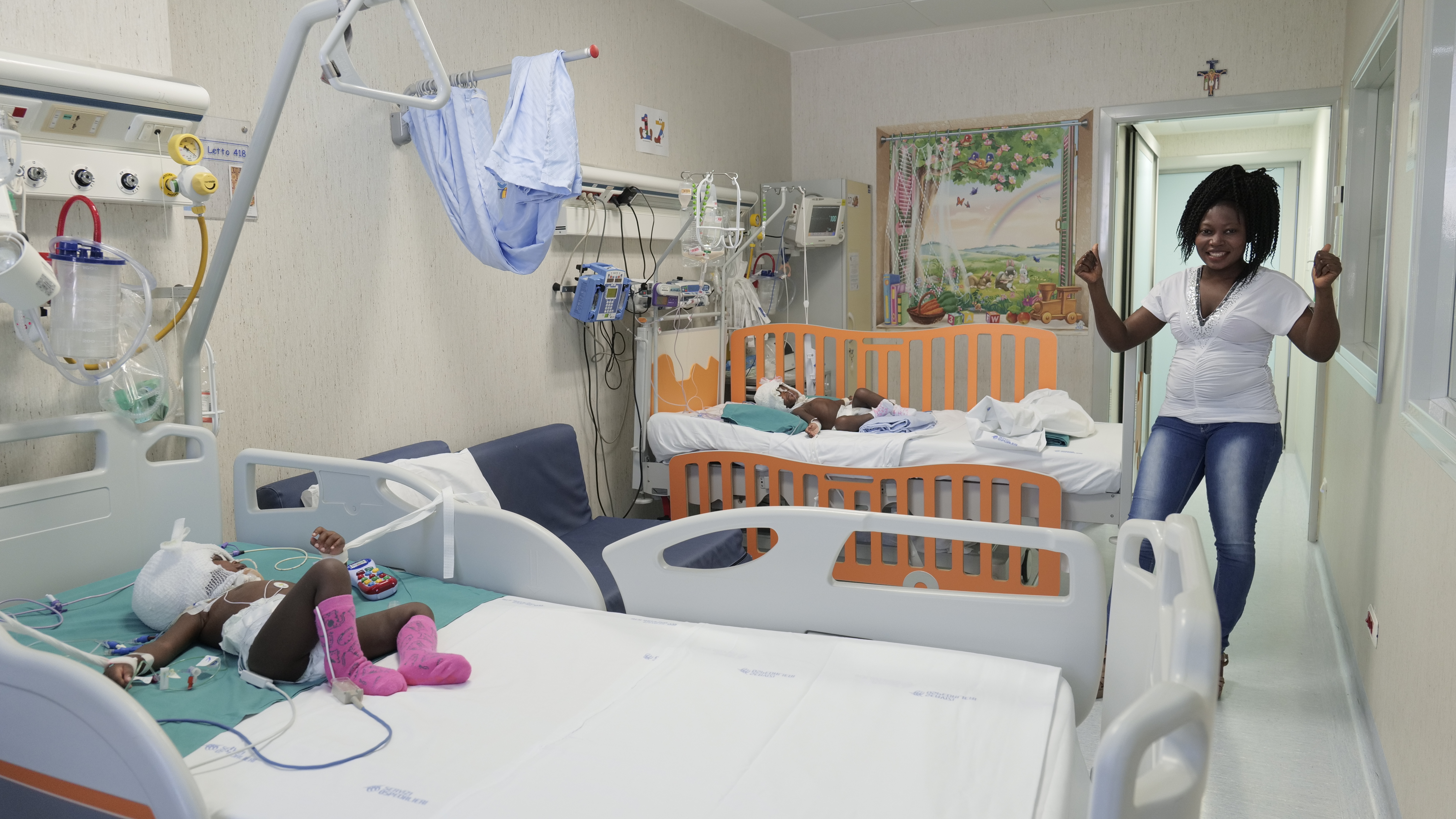01:38

Italian doctors hailed the "magical moment" twins conjoined at the head were successfully separated following a very rare and risky surgical procedure in a Rome hospital.
Two-year-old twin sisters Ervina and Prefina were joined skull-to-skull at birth with a congenital defect described as one of the rarest and most complex forms of cranial and cerebral fusion.
Essentially, this means that the twins shared the back of their skulls and the network of blood vessels bringing blood from the girls' brains to their hearts. This made separation a challenge for the team of specialists at the Vatican's Bambino Gesu Pediatric Hospital, which included neurosurgeons, anaesthesiologists, neuroradiologists, plastic surgeons, engineers, and physiotherapists.

Twin sisters Ervina and Prefina were born joined skull-to-skull due to a congenital defect. /Handout/Bambino Gesu Hospital/AFP
Twin sisters Ervina and Prefina were born joined skull-to-skull due to a congenital defect. /Handout/Bambino Gesu Hospital/AFP
The hospital said separation required "three very delicate operations to progressively reconstruct two independent venous systems." The bones of the shared skull had to be divided so the surgeons could then reconstruct the membrane covering the two brains and recreate the skin lining over the new skulls.
And three surgeries, 18 hours and 30 doctors and nurses later, on 5 June, Ervina and Prefina were separated successfully and will have the opportunity to grow normally and "lead a normal life, like all girls of their age," the hospital said.
"It was an experience that wasn't just professional but above all, human: to think that you can arrive at something that we had only imagined, with all the possibilities of failure," Carlo Marras, chief of pediatric neurosurgery at Bambino Gesu, told AP.

A team of 30 doctors and nurses oversaw the 18-hour surgery to separate the twin sisters. /Handout/Bambino Gesu Hospital/AFP
A team of 30 doctors and nurses oversaw the 18-hour surgery to separate the twin sisters. /Handout/Bambino Gesu Hospital/AFP
Marras led the team that worked for nearly two years planning and executing the separation. The two sisters from Bangui, Central African Republic, were brought to Italy in September 2018 after the hospital's president met the twins and their mother at the medical center where they were born.
The tests showed the twins to be generally in good health, but one sister's heart was working harder to maintain the "physiological balance of the organs of both, including the brain."
The girls had "distinct" personalities, the hospital said, Prefina being vivacious and playful, with her sister Ervina more serious and quietly observing. Now, the twins have a chance to live their individual lives and develop their own distinct personalities.
The sisters waved and clapped as they celebrated their second birthday in the hospital with their mother on 29 June. And now, one month after the final separation, the twins are said to be fine, although they would have to wear protective helmets for a few months, as the risk of infection remains.

Ervina and Prefina's mother, Ermine Nzotto, was overjoyed by the successful outcome of the surgery and hopes her daughters study to become doctors in the future. /Handout/Bambino Gesu Hospital/AFP
Ervina and Prefina's mother, Ermine Nzotto, was overjoyed by the successful outcome of the surgery and hopes her daughters study to become doctors in the future. /Handout/Bambino Gesu Hospital/AFP
Twins conjoined by the skull are extremely rare – there is only approximately one case in every 2.5 million live births – the hospital said, adding that in Europe in the past 20 years, only two cases of separating twins joined at the top of their skulls had been successful.
There have been successful separation surgeries in the past of twins joined at the head, but most have been for twins whose heads were fused vertically, at the top. Ervina's and Prefina's skulls were joined back-to-back in what is known as "total posterior craniopagus."
Marras said there was only one previously known case of a separation of twins conjoined at the back of the head, performed in the U.S. during the 1980s. He said the outcome in that case was poor.
In the case of the sisters from Central African Republic, Marras said the girls so far have suffered no neurological harm, and remain optimistic for Ervina and Prefina's futures, as does their mother.
"It's a joy, that I can see my girls run and play like other children. May they tomorrow study and learn to become doctors to save the other children of this world," Ermine Nzotto said through an interpreter at the hospital press conference.
Video editor: James Sandifer
Source(s): AP
,AFP